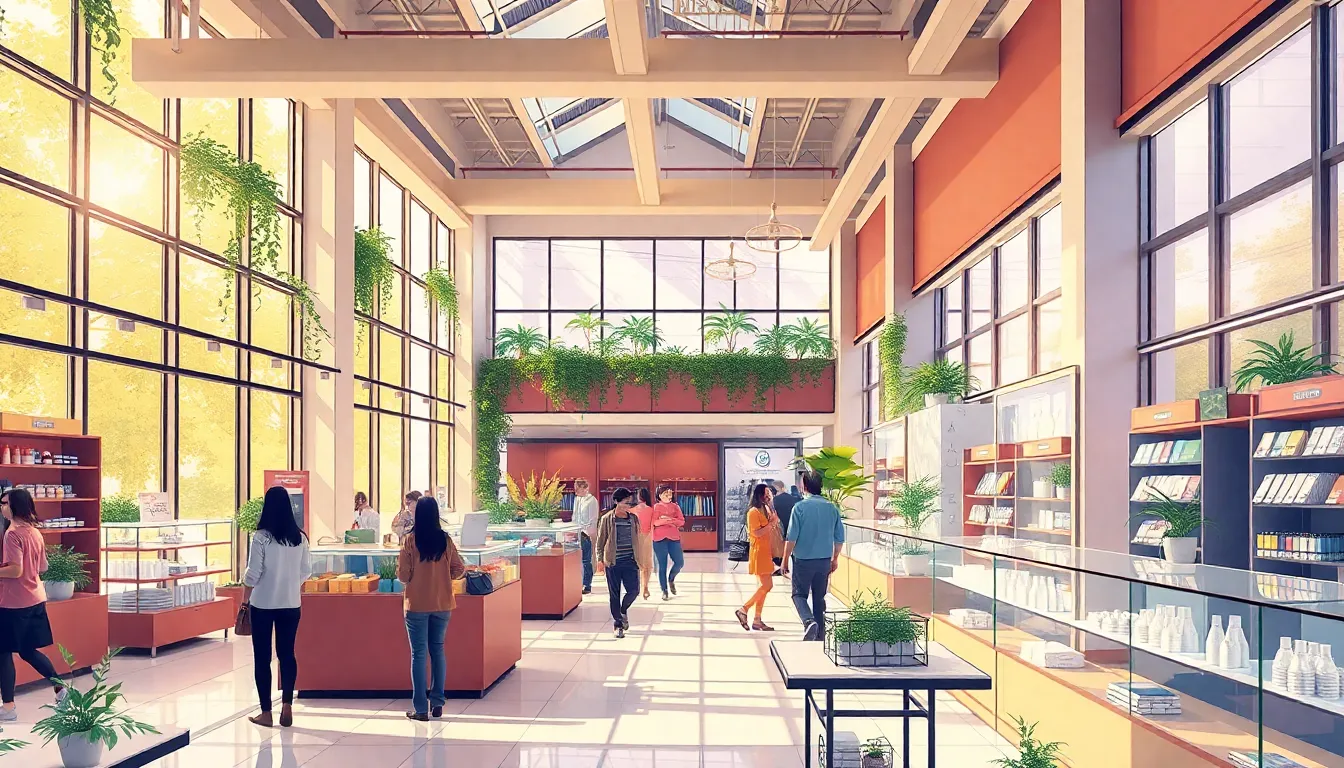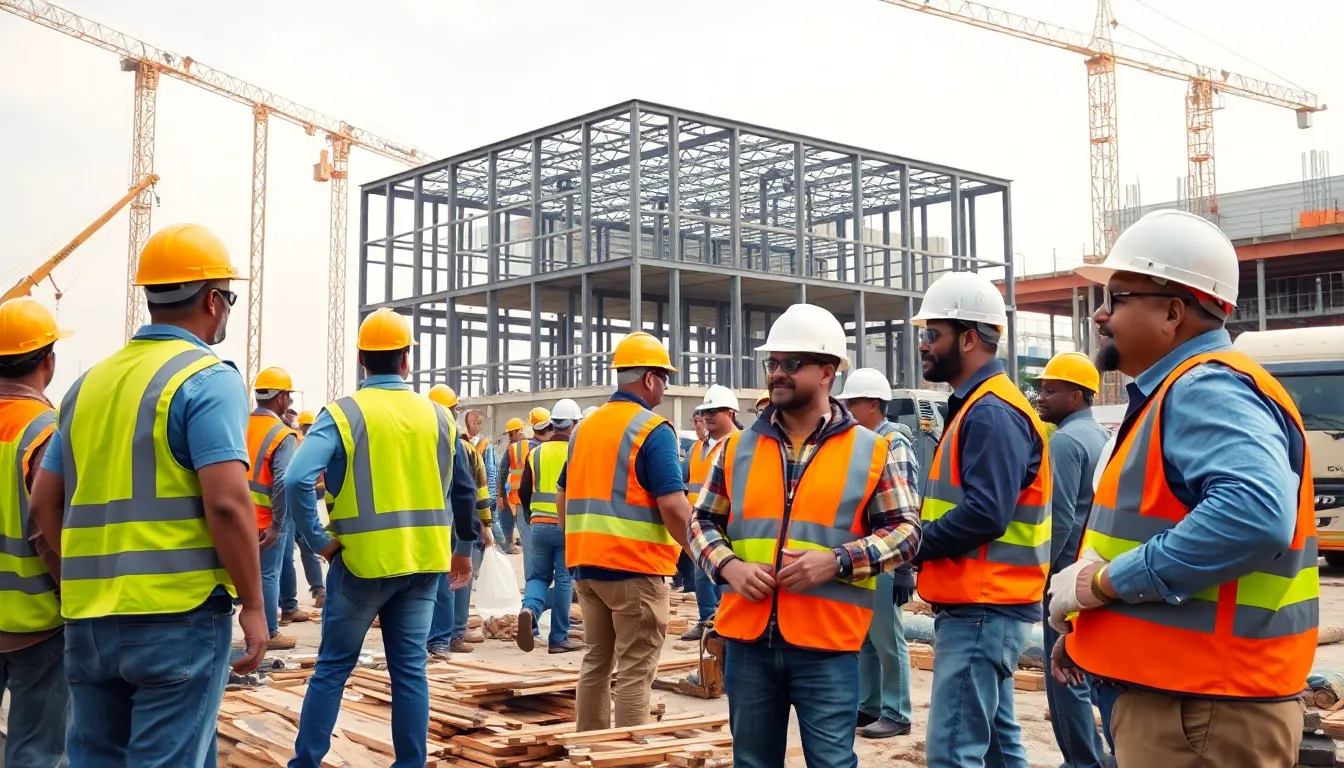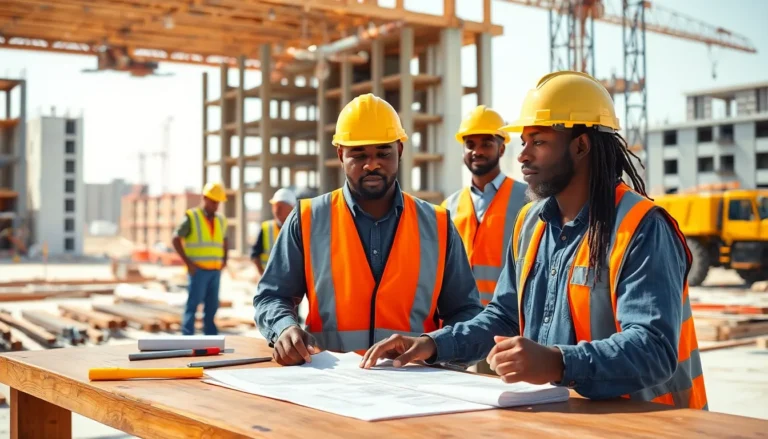Table of Contents
ToggleIn the fast-paced world of retail, first impressions matter more than ever. A well-constructed retail building isn’t just a structure; it’s the stage where brands perform their magic. From the moment a customer steps inside, they should feel the vibe that says “shop here, you won’t regret it!” But how does one create that perfect retail space?
Retail building construction isn’t just about bricks and mortar; it’s about crafting an experience that draws customers in and keeps them coming back for more. Whether it’s a cozy boutique or a sprawling megastore, the right design and construction can transform a simple shopping trip into a memorable adventure. So buckle up as we dive into the nuts and bolts of retail construction and discover how to build a space that’s not just functional, but also fabulously inviting.
Overview of Retail Building Construction
Retail building construction encompasses the development of spaces designed for selling goods. It involves selecting suitable locations that maximize visibility and accessibility for customers. Architects and designers focus on creating environments that enhance the shopping experience through thoughtful layout and aesthetics. Elements such as lighting, signage, and flow affect customer interaction within the space.
Planning also plays a significant role in retail construction. Developing a comprehensive plan ensures that all aspects of the project align with business objectives. Budgeting influences material selection and construction methods, impacting both cost and quality. Timelines become critical as delays can lead to lost revenue.
Materials used in retail construction vary widely, from concrete and steel to wood and glass. Each material contributes to a specific look and feel, appealing to target demographics. Sustainable practices, like using recycled materials, enhance the project’s appeal while meeting environmental standards.
Technology integration becomes essential in modern retail spaces. Smart systems improve energy efficiency and enhance security. Digital signage provides real-time information, creating dynamic shopping experiences.
Additionally, compliance with local codes and regulations remains crucial throughout the construction process. Building permits often require thorough documentation and inspections. Adhering to these requirements ensures a smooth opening and operational continuity.
Constructing a retail building demands collaboration between various stakeholders. Contractors, engineers, and local authorities all contribute to the successful execution of the project. Their combined efforts lead to spaces that not only house products but also foster connections between brands and customers.
Key Considerations in Design

Designing a retail space requires careful attention to several critical factors. Those factors contribute to both functionality and aesthetic appeal.
Functionality and Layout
Functionality plays a vital role in retail design that enhances customer experience. An efficient layout encourages smooth customer flow, minimizing congestion and maximizing interaction with products. Strategically placing checkout areas near exits ensures convenience for shoppers. Creating distinct zones for different product categories facilitates easy navigation. Incorporating accessible entrances and pathways supports inclusivity, making the space welcoming for all shoppers. Designers must also consider storage solutions, ensuring adequate backroom space that does not interfere with the shopping area. Overall, a practical layout aligns with operational efficiency and fosters frequent customer visits.
Aesthetic Appeal
Aesthetic appeal significantly impacts customer perception and engagement. Visual elements such as color schemes, materials, and lighting must resonate with the brand identity. Thoughtful use of natural light can create an inviting atmosphere that encourages exploration. Utilizing unique architectural features captures attention and differentiates the retail environment from competitors. Merchandising displays should incorporate artful arrangements, drawing customers in and inspiring purchases. Furthermore, integrating outdoor views or greenery can enhance the overall ambiance, providing a refreshing experience. Ultimately, aesthetics combined with branding reinforce a positive connection between the customer and the shop.
Materials Used in Retail Construction
Retail construction relies on diverse materials that shape both the functionality and appeal of the space. Selecting the right materials plays a vital role in creating a welcoming atmosphere for customers.
Sustainable Options
Sustainable materials prioritize environmental impact without sacrificing quality. Options like reclaimed wood, recycled metal, and low-VOC (volatile organic compounds) paints reduce ecological footprints. Additionally, energy-efficient systems use materials designed for optimal insulation. Incorporating solar panels also enhances sustainability while lowering energy costs. These choices resonate with eco-conscious consumers and support a brand’s commitment to corporate responsibility.
Cost-effective Solutions
Cost-effective materials focus on maximizing value while minimizing expenses. Concrete remains a popular choice due to its durability and versatility, often used in flooring and walls. Similarly, steel provides strength at a reduced weight compared to other options, making it efficient for structural components. Fiber cement board is another economical alternative, offering durability and aesthetic appeal for exteriors. These materials balance budget considerations with long-term performance, helping businesses maintain operational efficiency.
Regulatory Requirements
Regulatory requirements play a pivotal role in retail building construction. Adhering to these guidelines ensures compliance and fosters a safe and functional environment.
Zoning Laws
Zoning laws govern land use within specific areas. These regulations dictate the types of businesses allowed in particular zones. Developers must consult local authorities to determine permissible activities and building specifications. Restrictions regarding height, density, and usage often arise, affecting design decisions. Understanding zoning laws early in the planning process aids in avoiding costly alterations. Engaging with community stakeholders can also provide insights and increase project support.
Building Codes
Building codes outline safety and performance standards for structures. These codes encompass aspects like structural integrity, fire safety, and accessibility. Each jurisdiction maintains its own set of codes, necessitating thorough research during design. Compliance with electrical, plumbing, and HVAC standards is also crucial for functionality. Regular inspections mitigate risks and ensure adherence throughout construction. A dedicated team familiar with local codes can streamline the process and enhance safety measures.
Project Management in Retail Construction
Effective project management is essential for successful retail construction. Managers oversee various facets, ensuring the alignment of goals and objectives with the overall vision.
Budgeting and Financing
Budgeting influences every stage of retail construction. Accurate estimates help determine project feasibility and ensure resources are allocated efficiently. Financial planning includes construction costs, permits, and unexpected expenditures. Stakeholder financing options play a crucial role in enabling project completion, as engaging with banks or investors ensures sufficient funds. Cost control measures help avoid budget overruns, with strategies like value engineering optimizing expenditures. By prioritizing transparency in financial reporting, project managers foster trust among stakeholders.
Timelines and Schedules
Timelines establish a roadmap for project execution. Clearly defined schedules facilitate coordination among contractors, suppliers, and architects. In retail construction, phasing tasks effectively ensures key milestones are met, especially those related to seasonal openings. While delays can occur due to unforeseen issues, proactive management minimizes disruptions. Regular monitoring of progress helps adjust timelines as needed, aiding in maintaining momentum. Prioritizing critical path methods allows teams to focus on essential tasks, enhancing overall efficiency. By managing time effectively, projects can proceed smoothly, aligning with business objectives and anticipated launch dates.
Creating a successful retail space requires a thoughtful approach to construction that balances functionality and aesthetics. By prioritizing customer experience and ensuring accessibility, businesses can cultivate an inviting atmosphere that encourages shoppers to return. The selection of materials and adherence to sustainable practices further enhances the appeal of the retail environment, aligning with modern consumer values.
Effective project management is crucial in navigating the complexities of retail building construction. Clear communication among all stakeholders helps ensure that timelines and budgets are met while maintaining compliance with local regulations. Ultimately, a well-designed retail space not only attracts customers but also fosters lasting connections between brands and their audience.







